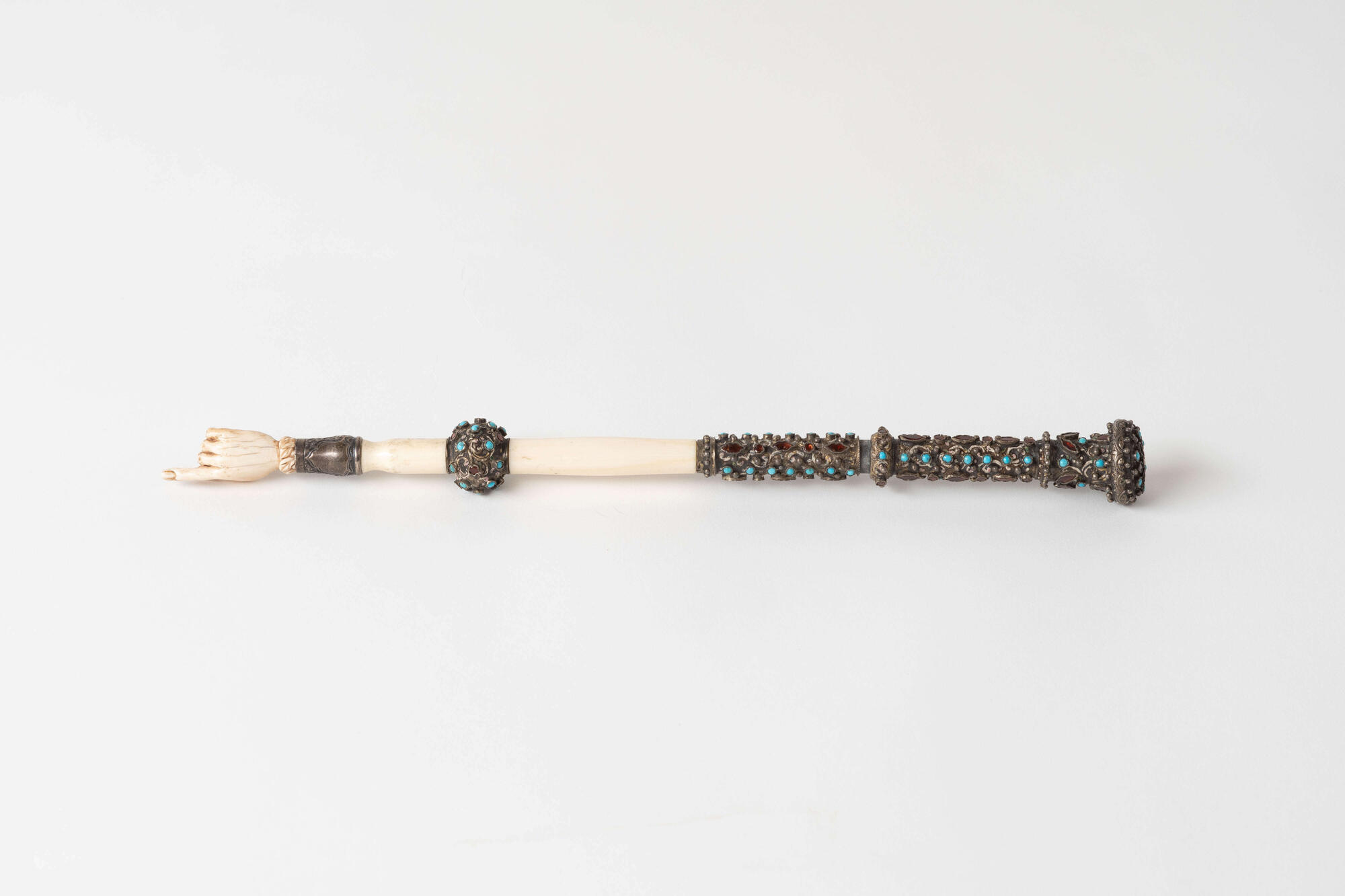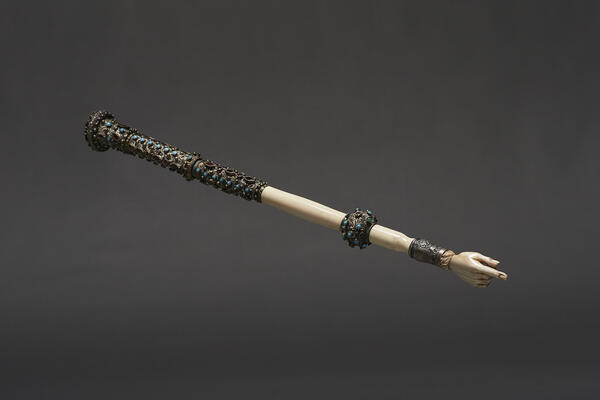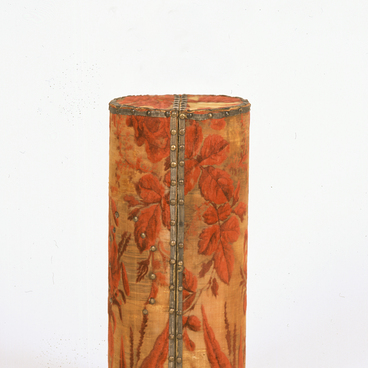“The Talmud” literally translates from Hebrew as “study”. It is a compilation of canonical rules, teachings, and laws of the Jewish faith. It was created over the course of 600 years and includes laws on marriage, holidays, norms of behavior, and rituals. One of the traditions enshrined in the Talmud concerns the Torah scroll with the text of the Pentateuch, the main sacred object of the Synagogue. It is forbidden to touch the scroll of the Torah with one’s hands, so in order that the reader could follow the text, they used a special pointer, or yad, which means “hand” in Hebrew.
The pointers consisted of a decorated handle, a rod and a head in the shape of a right hand with an outstretched index finger. The earliest surviving pointers are dated to the 16th century. The pointers were an important ritual object, so they were made of noble materials and lavishly decorated. Silver, valuable wood, ivory, precious and semi-precious stones, pearls and coral were used for making pointers. When making ritual pointers, masters used all known jewelry techniques: casting, embossing, stamping, filigree, engraving. Sometimes a ring was depicted on the pointing finger.
Pointers were made to order and presented to the synagogue as gifts from the entire congregation or privately. Many of the pointers were engraved with the names of the donors, as well as dedicatory inscriptions or quotations from biblical texts. The most popular phrase for engraving is taken from the fourth chapter of Deuteronomy, “And this is the law which Moses set before the children of Israel”. It was not uncommon that pointers were also used at home, especially on holidays.
Applied Jewish art was closely connected with the synagogue and ceremonial objects, which, apart from their functional value, were also decorative. After reading the Torah, the scrolls were rolled up and covered with a special cloth, and the pointers could be attached to the rollers for decoration.
Pointers rarely left the communities where they were made or the synagogues for which they were intended. The yad in the collection of the Russian Museum of Ethnography is a rare exception; it was made in England in 1911.
The pointers consisted of a decorated handle, a rod and a head in the shape of a right hand with an outstretched index finger. The earliest surviving pointers are dated to the 16th century. The pointers were an important ritual object, so they were made of noble materials and lavishly decorated. Silver, valuable wood, ivory, precious and semi-precious stones, pearls and coral were used for making pointers. When making ritual pointers, masters used all known jewelry techniques: casting, embossing, stamping, filigree, engraving. Sometimes a ring was depicted on the pointing finger.
Pointers were made to order and presented to the synagogue as gifts from the entire congregation or privately. Many of the pointers were engraved with the names of the donors, as well as dedicatory inscriptions or quotations from biblical texts. The most popular phrase for engraving is taken from the fourth chapter of Deuteronomy, “And this is the law which Moses set before the children of Israel”. It was not uncommon that pointers were also used at home, especially on holidays.
Applied Jewish art was closely connected with the synagogue and ceremonial objects, which, apart from their functional value, were also decorative. After reading the Torah, the scrolls were rolled up and covered with a special cloth, and the pointers could be attached to the rollers for decoration.
Pointers rarely left the communities where they were made or the synagogues for which they were intended. The yad in the collection of the Russian Museum of Ethnography is a rare exception; it was made in England in 1911.



